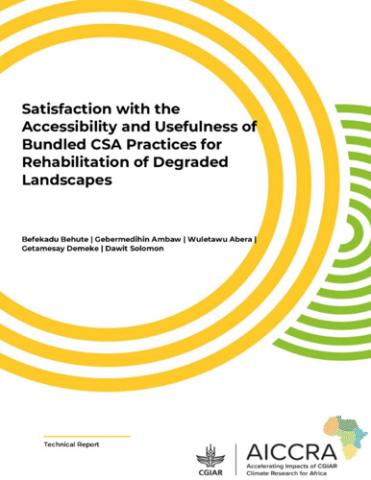Abstract
In Africa, particularly East Africa, more than 80% of the population depends on agriculture and the income generated from the sector that contributes about 30-40% to the regional Gross Domestic Product (GDP) (Adesina, 2019). Ethiopia is the second most populated country in Africa with 80% of them are living in rural areas (Sakketa, 2022). Studies showed that many families in
Ethiopia are unable to produce the necessary amount of food and generate income for their own subsistence and food security (Devereux and Sussex, 2000). The high levels of poverty coupled with the high population pressure, land degradation, and water scarcity are increasing the vulnerability of the country to climate change (Tadesse et al, 2021). Ethiopia is among one of the countries in East Africa at disproportionately higher risk of adverse consequences of climate change (Zermoglio et. al., N.A). The country is extremely vulnerable to various climate change events, and it is considered a climate hotspot where climate change
poses grave threats to human well-being and natural environments (Aid, 2018). Climate variability and change are having significant direct and indirect impacts on agricultural production, agricultural value chains, food, and nutrition security as well as the overall sustainable growth of the sector in Ethiopia (Gitz et. al., 2016). The number of rainy days in the country has decreased perceptibly, which increases dry spells by 0.8 days per decade, causing crop moisture stress during the growing season. The mean annual temperature has been warming at a rate of 0.12 to 0.54 oC per decade and it is expected to rise by 1.4 to 4.1 oC by 2080. Average annual temperatures nationwide are expected to rise 3.1°C by 2060, and 5.1°C by 2090 (Rovin et al, 2013).

